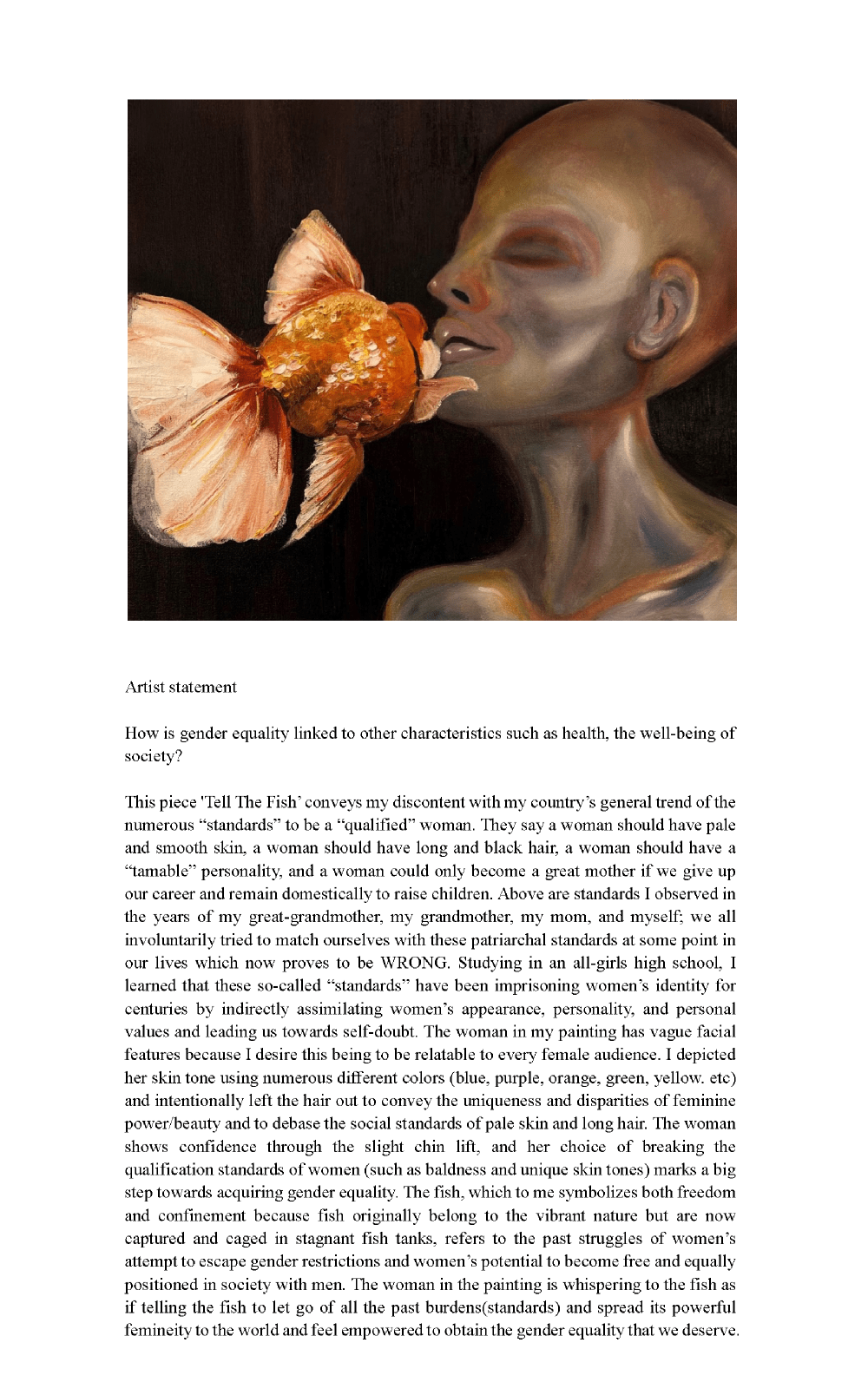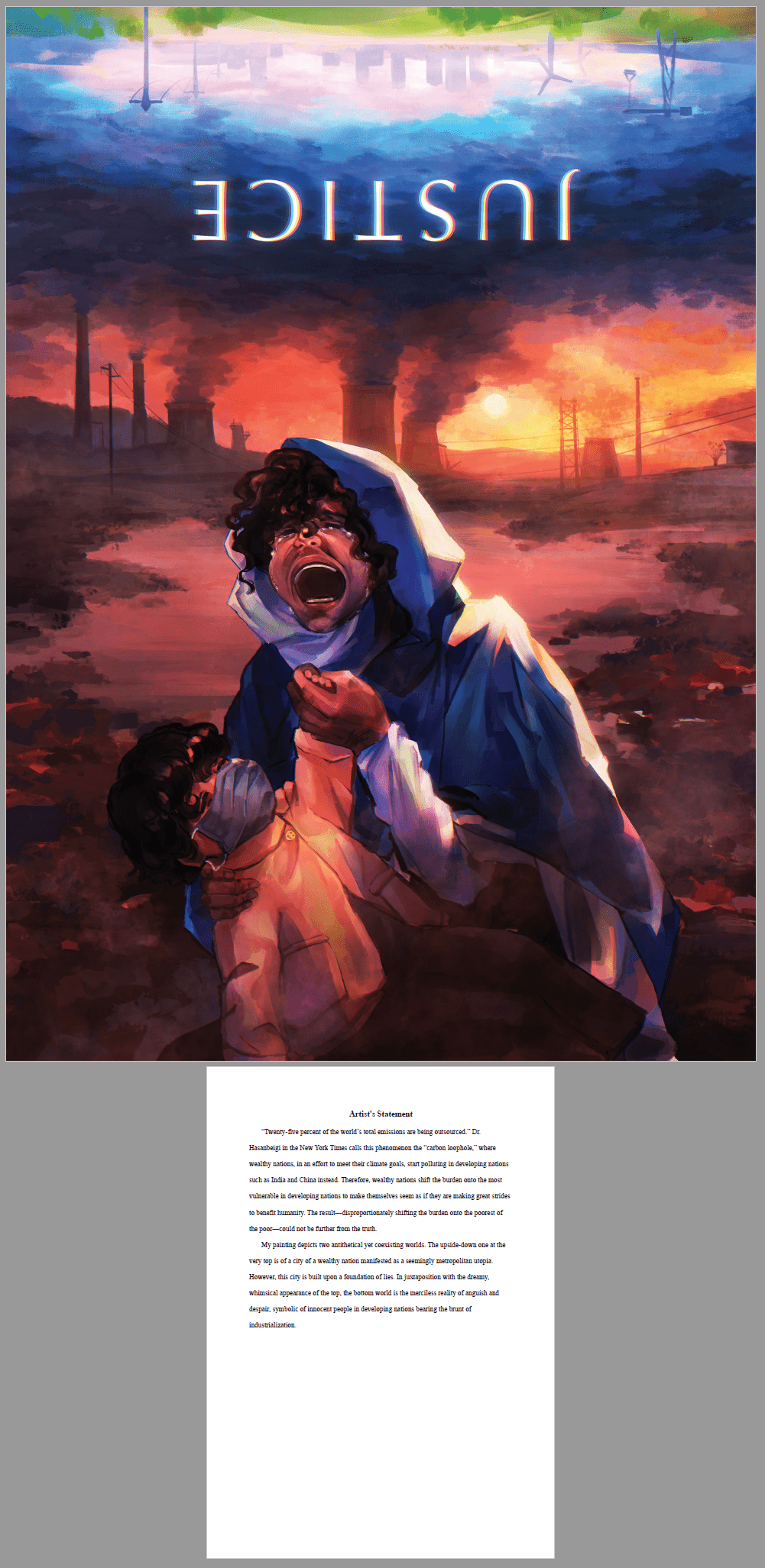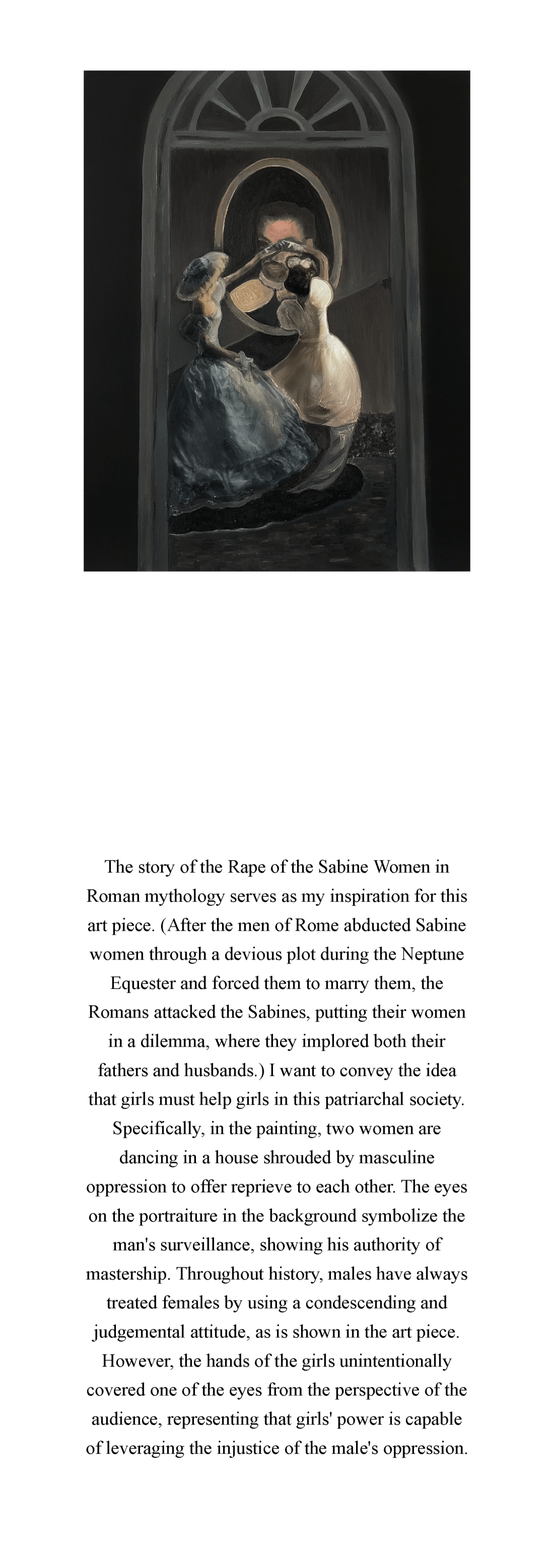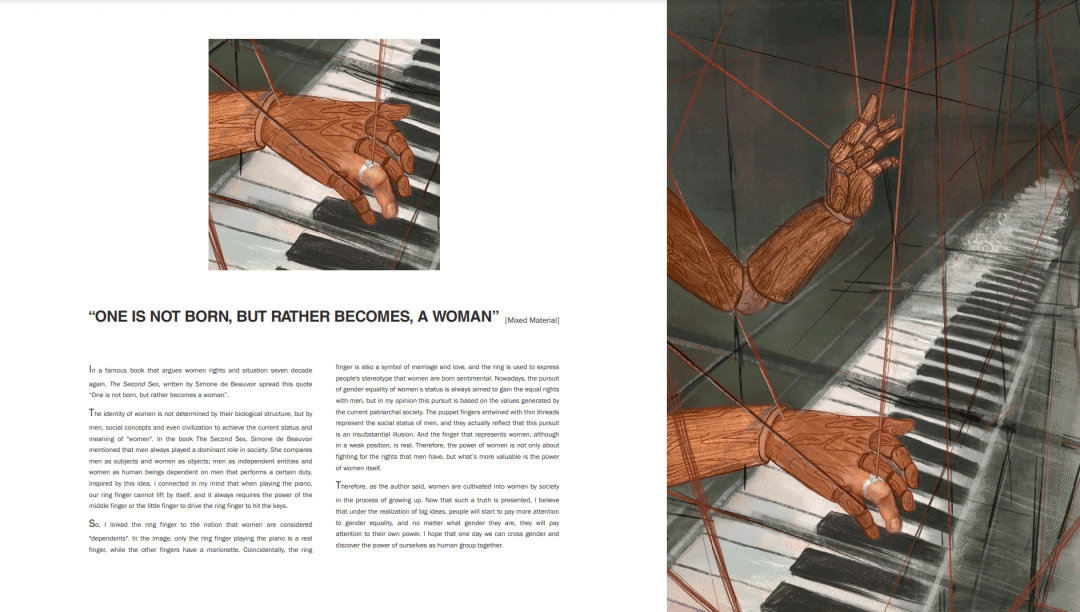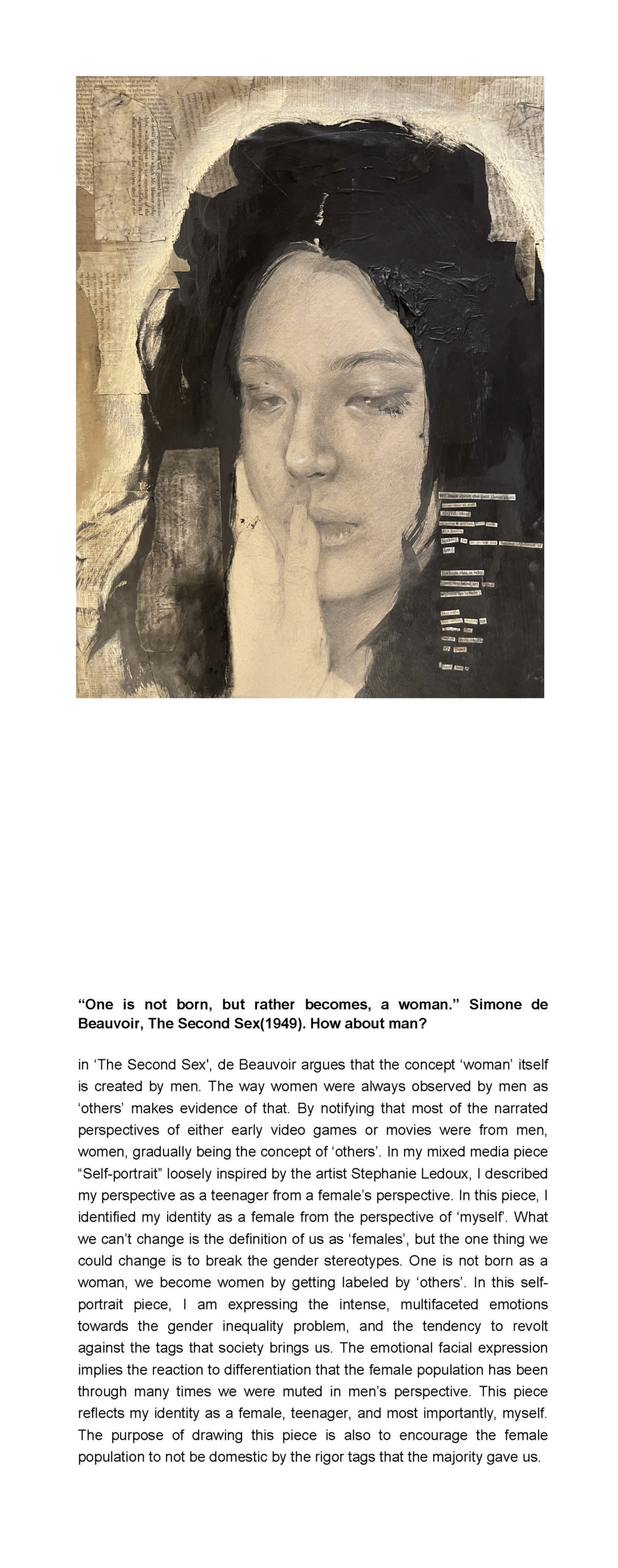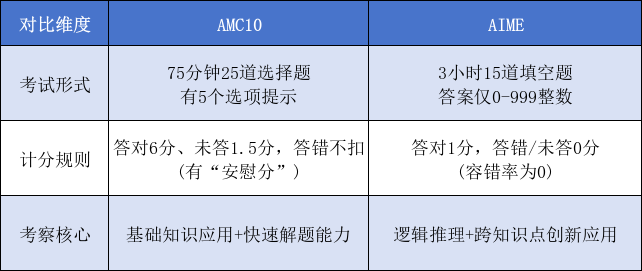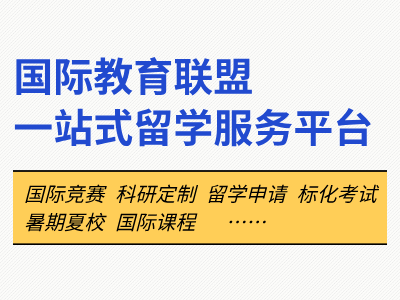Social Justice Awards 是由青少年非营利组织Social Justice Watcher (SJW) 所举办的写作、演讲与艺术大赛,旨在通过写作、演讲与艺术创作,引导青少年关注社会不平等现象,促使青年人思考并通过自身行动改变社会。
往届大赛中有来自中国、新加坡、美国、英国、加拿大、荷兰、瑞士、日本、泰国等地区300多所中学,超过1500名学生的参赛作品。多位获奖者被哈佛大学、耶鲁大学、哥伦比亚大学、斯坦福大学、芝加哥大学、西北大学、布朗大学、康奈尔大学、牛津大学等世界名校录取。
2023年比赛将由来自哥伦比亚大学、普林斯顿大学、复旦大学、剑桥大学、英国皇家艺术学院、天津美术学院、巴纳德学院的教授、演讲教练、设计师与艺术家担任赛事的最终评审委员。
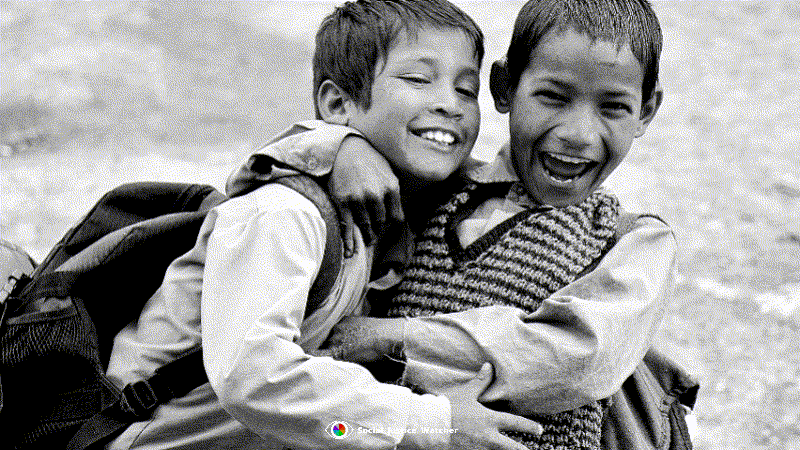
适合对象
任何国家、地区,任何学校,且年龄在提交截止日期时,未超过21岁的青少年均可参加比赛。
比赛时间
作品提交截止时间:2023年4月15日
公布入围作品名单:2023年5月1日
公布比赛获奖者名单:2023年6月1日
2023赛事主题
教育差距是不平等的根源。
教育不平等是学术资源的不平等分配,包括但不限于;为社会排斥的社区提供学校资金、合格且经验丰富的教师、书籍和技术。这些社区往往在历史上处于不利地位和受压迫。社会经济弱势学生是在学业上不成比例地面临障碍的人群。据了解,“与更多特权学生相比,代表性不足的学生在社会资本和社会支持方面存在差异,导致学业成绩差距”(应用发展心理学杂志)。“学业失败会让孩子终生受罚。没有完成高中教育或没有相关技能就离开学校的学生的生活前景较差”(经合组织)。
这次我们邀请世界各地的年轻人一起讨论教育不平等问题,思考如何通过行动改变人们的观念。我们希望向大家传达一个信息:教育不平等就是机会不平等。
我们必须立即行动。
参赛要求
所有候选人都必须通过 写作、演讲或艺术作品 的形式回答以下问题之一:
1. “The whole purpose of education is to turn mirrors into windows” – Sydney J. Harris. What do you think education should be?
2. How has education narrow or widen the gap between developing and developed nations?
3. Is it truly possible to decolonize the institution or does decolonization require us to abolish it altogether? What alternative institutions of knowledge could be built to replace academia?
4. How education changes lives?
奖项设置
比赛设有 一等奖、二等奖、三等奖、入围奖以及特别大奖;
特别大奖得主将获得由 American Scholastic Convention(ASC)提供的美国顶尖大学教授科研项目指定课题全额奖学金1份。
一、二、三等奖得主也将分别获得50%、30%、20%的指定课题奖学金1份。一等奖得主将获得由Social Justice Watcher(SJW)颁发的1000元奖金。
写作作品要求
● 作品须以英语写成
● 叙事文或论文(600-2000词);诗歌(不超过80行)
● 作品须为原创。如有引用他人作品,参赛者必须包括文中引用以及参考文献。如发现有抄袭,参赛者将被立即取消资格。不要在文中包括名字、家庭住址等任何个人信息。
演讲作品要求
● 作品须以英语演讲
● 演讲时长不得超过5分钟
● 作品须为原创。如有引用他人作品,参赛者必须包括文中引用以及参考文献。如发现有抄袭,参赛者将被立即取消资格。不要在文中包括名字、家庭住址等任何个人信息。
艺术作品要求
● 漫画、音乐、设计、视频、绘画、插图、混合画、摄影、版画
● 作品须为原创。
● 参赛者可以组成不超过2人的团队完成作品,或自己独自完成。
● 不要包括名字、家庭住址等任何个人信息
● 参赛者须提交不少于100词的英文作品陈述
历届获奖作品
“One is not born, but rather becomes, a man.” Does this statement look familiar yet queer to you? In parallel to the famous quote of Simone de Beauvoir in The Second Sex, the statement introduces the idea that despite the conventional wisdom that women are the only victim of gender stereotypes, both men and women can be trapped by the gender roles assigned by the society. These roles educate and create a man qualified as a member of his family and society, offering him the proud label of masculinity in his life. In this essay, I will first manifest the origin and the formation of the gender stereotypes for both men and women, and then I will depict men’s seemingly successful coexistence and utilization of such stereotypes, compared to the struggles of women. Finally, I will highlight every individual’s victimization, including men’s, under such stereotypes. An urgent need to remove these gender stereotypes for a fairer, more harmonious future calls the attention of the public. It is time to act.
The ancient civilizations have established gender role models for both men and women according to their social expectations, instructing both genders to behave properly and teaching them to become a “man” or “woman”. Based on the BBC documentary series Civilization, the Ancient Greek and Roman civilization solidified the concrete definitions for gender ideals. In ancient Rome, the society used a wide range of propaganda, particularly incredible artworks of sculptures to promote gender ideals. These artworks illustrated the epitome of male and female stereotypes in their successful role model of a woman who strived both as a municipal patron and a domestically orientated matron, some statues also illustrated male ideals at the time: A man covered in a toga or a pallium highlighted his civic contributions and his intellectual achievements, while a man in military dress or heroic nudity was associated with the prestigious emperors (Glenys Davies, 2008). Despite the apparent differences between the two types of male ideals, both types of men are regarded as elites who are widely praised in their social life. To sum up, these sculptures indicated the expected gender roles: women should always struggle to maintain the balance between her public and domestic life, while men should actively display his power and influence in public with either intelligence or aggression. The standardized traits for masculinity and femininity were created and encapsulated by these art pieces.
These sculptures of model men and women have become models for imitation and worship. They are spread around public spaces for exposure to the crowd. By offering both men and women such examples, the Greek and Roman culture have encouraged and instructed the two genders to inherit these depicted qualities to become successful in their own social life. Therefore, influenced by the underlying meaning these sculptures designed to convey for a long time, people afterwards no longer enjoyed pondering personal interpretations of how a man or woman should look like or behave. They lost their freedom and independence of mind to their culture. Instead, people were now defined and restricted by the created perfect images of men and women. They They saw the sculptures as their models to imitate; they followed the desired gender traits and roles depicted by these sculptures. They needed to fit into these taught disciplines to become a “true” man or woman. They “became” a man or a woman under the guidance of cultural influences and social expectations. In the long term, when these gender models were implanted into people’s minds, they developed into stereotypical images of men and women. These images may be the start of gender stereotypes. When the Age of Explorations began, these stereotypes, promoted by expansion and colonialism, spread from Europe to every continent of the world.
It may appear to most people that women are largely influenced by gender stereotypes, while men are mostly free of such restraints. Conventionally, we are familiar with the tradition of mothers teaching daughters how to sew and how to manage the households. Mothers are teaching their daughters how to “become” a woman: daughters inherit their mothers’ restriction to the domestic sphere and marital life due to the gender stereotypes. The new women, inspired by modern feminism, are irritated by this underestimation of their power (Finn Mackay, 2015). As a result, they launch female empowerment campaigns against these stereotypes. In contrast, there seems to be much fewer complaints and oppositions against the gender norms among men. Yet, this lack of objection does not mean that men are free of their assigned gender roles. norms from the elderly in their families. Just like mothers teaching their daughters how to “become” a woman, fathers also teach their sons how to “become” a man. In Marquez’s work Chronicle of a Death Foretold, Santiago Nasar has always been a copycat of his father: he runs the ranch the way his father used to run it, and he manages the gun the way his father used to manage it. To display his masculine traits in accordance with the requirements of gender norms, Santiago Nasar simulates his father in taking care of their family’s properties and possessing the symbols of the male arrogance: weapons. The male gender stereotypes ask the men to establish their own responsibility and strengths over the society (Douglas Schrock and Michael Schwalbe, 2009). Thus, men would only be pleasant to follow these stereotypes to become a capable, independent social leader. Additionally, in the book, the gender norms even offer men a privilege over women: double standard (Iris Vermeir and Patrick Van Kenhove, 2008, p281-295). While men who experiences sexual affairs before marriages are praised as being experienced and mature, women who lost their virginity in pre-marital sex are condemned and rejected by the society as ruined and stained. Therefore, the social stereotypes allow the men to enjoy freedom while offering them the legitimacy to restrict the freedom of the women.
Due to the reasons stated above, there would be no reason for men to rebel against such stereotypes and expectations, which favor men in return. When men are being taught to obey the established rules, they happily conform to these gender roles and social dominance in social status sometimes leads to the mistaken beliefs that men are not restrained and influenced by gender stereotypes. Yet, it is the gender stereotypes that empower the men and guarantee their dominance over women. Men are the contented advocates for the indoctrination of gender norms: they are satisfied and benefited by the control of stereotypes. For defending their self-interests, they further impose and enlarge the influence of gender stereotypes on women. Therefore, both men and women are taught and controlled by the gender norms to become a qualified member of their society. Nevertheless, the difference does exist. Men are benefitting, while women are suffering.
However, even though men are generally favored by these gender stereotypes, they can still become victims of these norms. Generally, men’s superiority over women brings them excessive duties, which later turns into their burdens. Sarcastically, it is their privileges that leave them victimized: their weakness stems from their masculine pride. As fulfilling gender roles become an honor code for an orderly, prosperous society, any attempt to break such harmony becomes a shame for the society and family (Gideon M. Kressel, 1992, p34-46). Men, being recognized as mighty, protective individuals, therefore become the guardian of their family’s and society’s honor. Men are required to take revenge against anyone who stains their family honor. In Chronicle of a Death Foretold, Marquez depicts the dilemma faced by the Vicario brothers. Angela Vicario lost her virginity before marriage, disobeying the female gender norm of fidelity and brothers must carry out their duty to murder the man that took Angela’s virginity to save family reputation (Becky Boling, 1987, p75-87). However, the Vicario brothers’ tireless efforts in publicizing their killing plan reveals their hope that someone will stop them from performing the act of killing. The honor codes and the gender norms now act against the brothers’ wills, forcing them to become murderers (Mary E. Davis, 1986, p24-42). Though the brothers do not want to murder another man, they finally complete their mission under the pressure of the social norms.
And the story of the Vicario brothers is not an accidental event: it is rather a universal phenomenon happening not only in Latin culture but also in the Far East (Gail Hershatter and Wang Zheng, 2008, p1404-1421). In the Chinese classical literature Dream of the Red Chamber, the male character Baoyu is forced to devote to his political career and revitalize the honor of his family, regardless of his real interest lies in poetry and arts. However, Baoyu needs to fulfill the duty of a man: to combat in political conflicts. Men need to sacrifice leisure for their career. They secure the family’s bureaucratic power to shield the female members of their families. Therefore, the two literary works above both establish the juxtaposition between the free will of the male characters and their mandatory duty. As men are expected to be loyal servants of social and gender norms, the male characters are both forced to turn to reality at the end of their struggles.
At this point, the men are finally placed in the same position as the women. They helplessly take involuntary acts according to the social norms, disregarding their individual values and feelings. The social norms and the gender stereotypes can have negative impacts on the individuals (Jacek Szmatka, 1979, p41-45): they teach them to become a new person, deviating them from their true beliefs and molding them into a tool that would be of great use to society. The society needs vigorous, courageous men for public spaces, and virtuous, docile women for housekeeping. The individuals live, act, and accomplish no more for their true self, as they serve to meet the needs of the society. They are made into “men” and “women” that suit their social functions by the norms and stereotypes at the end, losing their individuality and lost in conformism. Therefore, the former boundary between men and women is vanishing. No one is benefitting any more, while both men and women are suffering.
In conclusion, both men and women are taught to become “men” and “women” by the social and gender norms. It is crucial to note that, although men seem to be mostly benefitting from the gender stereotypes, anyone may fall into victimhood. If we still preserve these gender stereotypes, we will be influenced by their detrimental impacts claimed in the paragraph above: they are constantly removing individuality from both men and women, transforming them both into tools for stabilizing the whole society. Therefore, regardless of our different genders, it is our shared goal to mitigate the influences of gender stereotypes and norms when judging any individual. We need to define how a man or woman should behave based on our own values and inclination, a person based on his or her capabilities and personalities, instead of conceiving this person based on the prejudices of gender stereotypes. These goals are difficult to achieve, as these prejudices are ingrained into the culture of many regions and are thus hard to be lifted. Yet, there is no point in abandoning our hope. In a long-term future, owing to the proliferation of international media and the widespread influence of early education and literacy, I believe that we may enter an era mostly free of gender stereotypes and dominated by individuality and intellects instead.
Bibliography
Davies, G. (n.d.). Portrait statues as models for gender roles in Roman Society. https://www.jstor.org/stable/pdf/40379355.pdf Mackay, F. (2015).
Radical feminism: Feminist activism in movement. Palgrave Macmillan. Schrock, D., & Schwalbe, M. (2009). Men, masculinity, and manhood acts -JSTOR. www.jstor.org/stable/27800079
Vermeir, I., & Kenhove, P. V. (2008). Gender differences in double standards -JSTOR. Journal of Business Ethics. www.jstor.org/stable/25482214
Kressel, G. M. (1998). Shame and gender -JSTOR. Anthropological Quarterly. www.jstor.org/stable/3318096
Boling, B. (1987). Crónica de una muerte anunciada. Hispanic Journal. www.jstor.org/stable/44284136 Hershatter, G., & Zheng, W. (2008). Chinese history: A useful category of gender analysis. The American Historical Review. www.jstor.org/stable/30223449
SZMATKA, J. A. C. E. K. (1979). Individual and society: Unity or contradiction? The Polish Sociological Bulletin. www.jstor.org/stable/44815940
